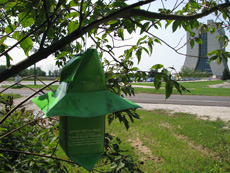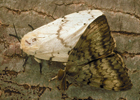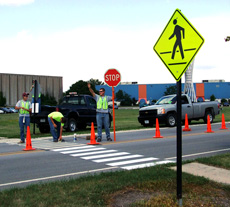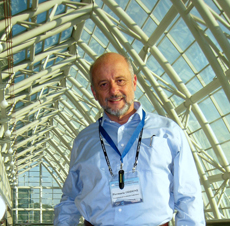|
Tue., Aug. 21
11:30 a.m.
Summer Lecture Series (NOTE TIME & LOCATION) - Curia II
Speaker: R. Pasquinelli, Fermilab
Title: Engineering at Fermilab
3:30 p.m.
DIRECTOR'S COFFEE BREAK - 2nd Flr X-Over
THERE WILL BE NO ACCELERATOR PHYSICS AND TECHNOLOGY
SEMINAR TODAY
Wed., Aug. 22
THERE WILL BE NO FERMILAB ILC R&D MEETING THIS WEEK
3:30 p.m.
DIRECTOR'S COFFEE BREAK - 2nd Flr X-Over
4:00 p.m.
Fermilab Colloquium - One West
Speaker: S. Sachdev, Harvard University
Title: Quantum Criticality and Black Holes
Click here for NALCAL,
a weekly calendar with links to additional information. |
Tuesday, Aug. 21
- Golden broccoli and cheese
- Cheesy Greek squeeze
- Coconut crusted tilapia
- Spaghetti with meatballs
- *Toasted almond chicken salad on croissant
- Assorted Slice Pizza
- Chicken fajitas
*Carb Restricted Alternative
Wilson Hall Cafe Menu |
|
Wednesday, August 22
Lunch
- Sausage & roasted pepper & three cheese calzone
- Caesar salad
- Peach cardinale
Thursday, August 23
Dinner
Closed
Chez Leon Menu
Call x4598 to make your reservation. |
|
|
Those aren't birdfeeders: green houses are moth traps

Neon-green gypsy moth traps dot the landscape of the north side of outbound Pine Street. The devices are precautionary traps for gypsy moths installed by the Illinois Department of Agriculture.
A series of neon green, triangle-shaped traps that appeared last week along Pine Street serve as Fermilab's contribution to a statewide early warning system for a deadly moth invasion. The leaf-chomping pests, which have been creeping westward across the country for decades, invaded pockets of northeastern Illinois in 2002, stripping plants bare.
In order to combat the gypsy moth invasions in 2002, municipalities sprayed pheromones and environmentally-friendly alternatives to pesticides in DuPage and Cook counties. A quarantine of wood products was established in Lake County, and combined efforts eradicated the infestation in Illinois.
The neon green traps at Fermilab are part of an effort to head off another potential wide-spread loss of greenery. The Illinois Department of Agriculture annually places traps every two or three square miles in heavily foliaged areas and Fermilab houses a handful of traps in the lab's 6,800 acres. If gypsy moths are caught in these traps, it would signal a need for the IDA to search surrounding areas and possibly institute a quarrantine. "We haven't seen a positive (this year)," said Fermilab ecologist Rodney Walton, who works closely with state environmentalists. "I don't think we have ever seen a positive here."
 |
| Male (bottom right) and female gypsy moths. Photo courtesy of Purdue University News |
Gypsy moths and their young can be transported on vehicles, camping gear or landscape material. The moths were brought to the United States from Europe in 1869 to help breed a harder silk worm, but soon got out of control. Each moth can have up to 1,000 caterpillars. Each two-inch caterpillar can strip trees and shrubs in a one-square yard area, leaving the plants open to disease and insect attacks. Male gypsy moths are brown with black markings and have a wingspan of an inch and a half. Female gypsy moths are slightly larger and white or cream-colored.
--Tona Kunz
|
Summer students contribute to traffic safety

Roads and Grounds summer employees' re-painted crosswalks to make the areas more noticeable to motorists and safer for pedestrians. Note the new florescent green signs identifying these areas.
|
From NSF press release,
August 20, 2007
Catching Some Rays
Enormous detector makes first real-time detection of elusive, low-energy neutrinos streaming from the sun's core
An international team of researchers has detected low-energy solar neutrinos--subatomic particles produced in the core of the sun--and measured in real-time the rate the particles hit our planet.
The researchers also obtained fresh evidence that neutrinos oscillate (transform from one state to another) before arriving at Earth, adding weight to present theories about the nature of neutrinos and the inner workings of the sun and other stars.
The team of more than 100 researchers, including National Science Foundation (NSF)-supported investigators at Princeton University and Virginia Tech, have operated the so-called Borexino experiment in one of the deepest laboratories in the world, the Gran Sasso Laboratory of the Istituto Nazionale di Fisica Nucleare (INFN, the Italian National Institute of Nuclear Physics), near the town of L'Aquila, Italy.
Read more
|
|
|
Making hay while the sun shines

Pier Oddone at the EXCO center, Daegu,
Korea
Last week the 23rd meeting of the International Symposium on Lepton Photon Interactions at High Energy (LP07) took place in Daegu, Korea. The Lepton Photon conference alternates every other year with the International Conference on High Energy Physics. Together they are the principal international meetings for our community.
About 400 participants from all over the world congregated in the ultra-modern EXCO Conference Center to discuss results and future programs. The conference organization was superb, enhancing physicists' opportunities for useful discussions. The progress on accelerators in Korea is quite impressive. The Pohang Accelerator Laboratory is developing plans for a free electron laser (FEL) and is now building ILC cavities. Also, the Korea Atomic Energy Research Institute is constructing a high-current superconducting linac, which will be used for nuclear physics research and ultimately be the front end of a neutron source.
Coupled with the LP07 conference, I attended meetings of the ILC Steering Committee (ILCSC) and the International Committee on Future Accelerators (ICFA). At the ILCSC meeting Barry Barish, the Director of the Global Design Effort, made the official presentation of the ILC Reference Design Report to the chair of the ILCSC, Professor Shin-Ichi Kurokawa. The ILCSC also received the recommendations of the ad-hoc committee on the selection of a Research Director for the ILC experimental program. A call for letters of intent for the design of the experimental program will be forthcoming from the ILCSC. The ILC experimental community recommended to the ILCSC that it adopt the mechanism of Letters of Intent (LOIs) to arrive at a preliminary engineering design of the experimental program for the ILC, to be ready in conjunction with the accelerator Engineering Design Report. The Research Director together with an advisory committee will select the detectors to be developed for the EDR. This step is specific to the EDR and does not preclude other collaborations to form and propose detectors once the ILC is officially constituted as an international project.
These days when I attend international physics conferences, I struggle to remain humble; the excellent results from Fermilab are a large and dominant component of the presentations at these conferences. The range of Tevatron results on different aspects of collider research is defining our knowledge of the energy frontier. The field of accelerator-based neutrino research is now dominated by the Fermilab results from MINOS and MiniBooNE. On the astrophysics frontier, the contributions of the Sloan Digital Sky Survey, the Pierre Auger Observatory and CDMS stand out. In addition to results from other facilities, the conference also featured the new results and steady progress of lattice QCD as well as the elaboration of the many theoretical models to be explored at the LHC, all activities with strong contributions from Fermilab.
|
|
Have a safe day!
Steering Group draft report discussions August 24 and September 27
All Fermilab employees and users are invited to attend the upcoming
presentations and discussions of the Fermilab Steering Group draft report. The first meeting will be on Friday, August 24 at noon in Ramsey Auditorium. To give users more time to make travel arrangements, a Town Hall meeting organized by the Users
Executive Committee has been scheduled for Thursday, September 27 at 5 p.m. in One West. Fermilab Deputy Director Young-Kee Kim will lead the program at both meetings.
Blood Drive August 28-29
A blood drive will be held August 28 and 29 from 8:00 a.m. to 2:00 p.m. in the Wilson Hall Ground Floor NE Training Room. Although sign up is recommended to keep wait times to a minimum, walk-ins will be accepted. Reservations are available online or by contacting Diana @ x3771 or Margie @ x 3411. Donors will receive a very nice travel mug set (see posters for details).
Fermi Kyuki-Do Martial Arts Class began August 20
Kyuki-Do combines the strikes of Taekwon-Do, the throwing and grappling techniques of Judo and Jujitsu, the joint locks of Hapki-Do, and the practice of Kobudo (traditional weapons) into one art. Classes are held on Monday and Wednesday from 5 - 6 p.m. at the Recreation Facility in the Village. You need to register through the Recreation Office and must be a member of the Recreation Facility. The six week session cost is $45. The focus is practical self-defense that can be used by women or men. Attendees will learn kicks, blocks, hand techniques, throws, pins, self-defense, and forms that will teach balance, power and grace.
Additional Activities |
|